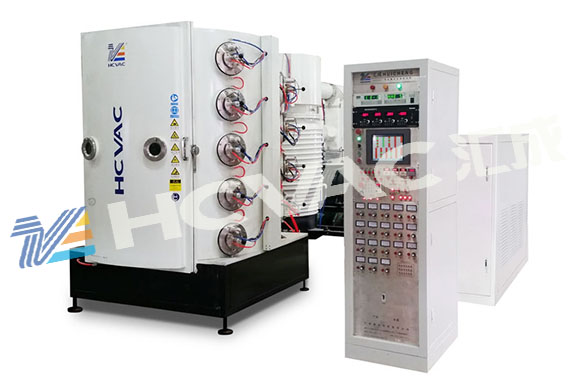Among the coating material selections for hard pvd coating machines, TiN is the most mature and widely used technology. At present, the usage rate of TiN-coated high-speed steel cutting tools in industrially developed countries has accounted for 50% to 70% of high-speed steel cutting tools, and the usage rate of some complex cutting tools that cannot be regrinded has exceeded 90%.

Since modern metal cutting has high technical requirements for cutting tools, TiN coatings are increasingly unable to adapt. The oxidation resistance of the TiN coating is poor. When the use temperature reaches 500°C, the film layer is obviously oxidized and ablated, and its hardness cannot meet the needs. TiC has high microhardness, so the material has better wear resistance. At the same time, it adheres firmly to the substrate. When preparing multi-layer wear-resistant coatings, TiC is often used as the bottom film in contact with the substrate. It is a very commonly used coating material in coated tools.
The development of TiCN and TiAlN has brought the performance of coated cutting tools to a higher level. TiCN can reduce the internal stress of the coating, improve the toughness of the coating, increase the thickness of the coating, prevent the spread of cracks, and reduce tool chipping. Setting TiCN as the main wear-resistant layer of coated tools can significantly increase the tool life.
TiAlN has good chemical stability and resists oxidation and wear. When processing high-alloy steel, stainless steel, titanium alloy, and nickel alloy, the life of TiAlN-coated tools is 3-4 times longer than that of TiN-coated tools. If there is a high Al concentration in the TiAlN coating, a very thin layer of non-quality A12O3 will be generated on the coating surface during cutting, forming a hard inert protective film. This coated tool can be used more effectively. High speed cutting. Oxygen-doped titanium nitride carbide TiCNO has high microhardness and chemical stability, and can produce an effect equivalent to a TiC+A12O3 composite coating. Metal processing WeChat has good content and deserves attention.
Among the above-mentioned hard film materials, there are three types whose microhardness HV can exceed 50GPa: diamond film, cubic boron nitride CBN, and carbon nitride.
The temperature requirements for depositing many diamond films are 600°C to 900°C, so this technology is often used to deposit diamond films on the surface of cemented carbide tools. The commercialization of diamond carbide cutting tools is a major achievement in coating technology in recent years.
CBN is second only to diamond in terms of hardness and thermal conductivity, and has excellent thermal stability. It does not oxidize when heated to 1000°C in the atmosphere. CBN has extremely stable chemical properties for iron group metals. Unlike diamond, which is not suitable for processing steel, it can be widely used for finishing and grinding of steel products.
In addition to excellent wear resistance, the CBN coating of the hard pvd coating machines can also process heat-resistant steel, titanium alloy, and quenched steel at very high cutting speeds, and can cut high-hardness chilled rolls, carbon-doped quenching Materials and Si-Al alloys that cause severe tool wear. The main methods for low-pressure gas phase synthesis of CBN films include CVD and PVD. CVD includes chemical transport PCVD, hot wire-assisted heating PCVD, ECR-CVD, etc.; PVD includes reactive ion beam plating, active reactive evaporation, laser evaporation, ion beam-assisted deposition, etc. CBN synthesis technology still has a lot of work to do in terms of basic research and application technology, including reaction mechanism and film formation process, plasma diagnosis and mass spectrometry analysis, determination of optimal process conditions, development of high-efficiency equipment, etc. Carbon nitride has the potential to be as hard as or exceed diamond. The success of synthesizing carbon nitride is an outstanding example of molecular engineering.



